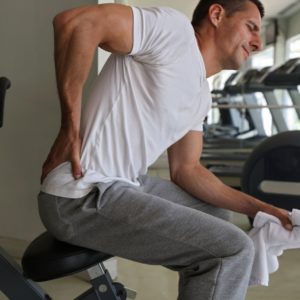
- A Herniated Disc
The spine is relatively complex. Its length has three segments and 24 individual bones. Between each set is an intervertebral disc. Spinal discs add height to the spaces through which nerve roots exit the spinal canal. They also prevent friction between sets of bones. A disc that is diseased or damaged can leak water content, resulting in herniation. A herniated disc can compress nerve roots, leading to pain in the spine or the extremities. This problem most commonly occurs in the low back.
- Osteoarthritis
Osteoarthritis is a condition in which the bone and soft tissues of a joint break down. People commonly hear that knee pain may be due to osteoarthritis, or shoulder pain. The spine, however, gets overlooked as a part of the body made up of numerous joints. In the spine, the facet joints provide flex and mobility. If the cartilage in any one of these joints wears down, pain may occur with certain movements. In severe cases, facet joint arthritis can involve complete deterioration of the cartilage, resulting in friction between two vertebrae.
- Spinal Stenosis
The spinal column provides structure to the back and neck and also houses the spinal cord that spans its length. The spinal cord sits undisturbed in a canal created by perfectly aligned bones. Misalignment or other problems can narrow that opening and cause compression on one or more nerve roots. This compression is a common cause of neck, back, or extremity pain.
Princeton Neurological Surgery proudly serves the areas of Morristown, Hamilton, Paramus, Union, and Bridgewater. To schedule your consultation with Dr. Lipani, contact an office near you.


